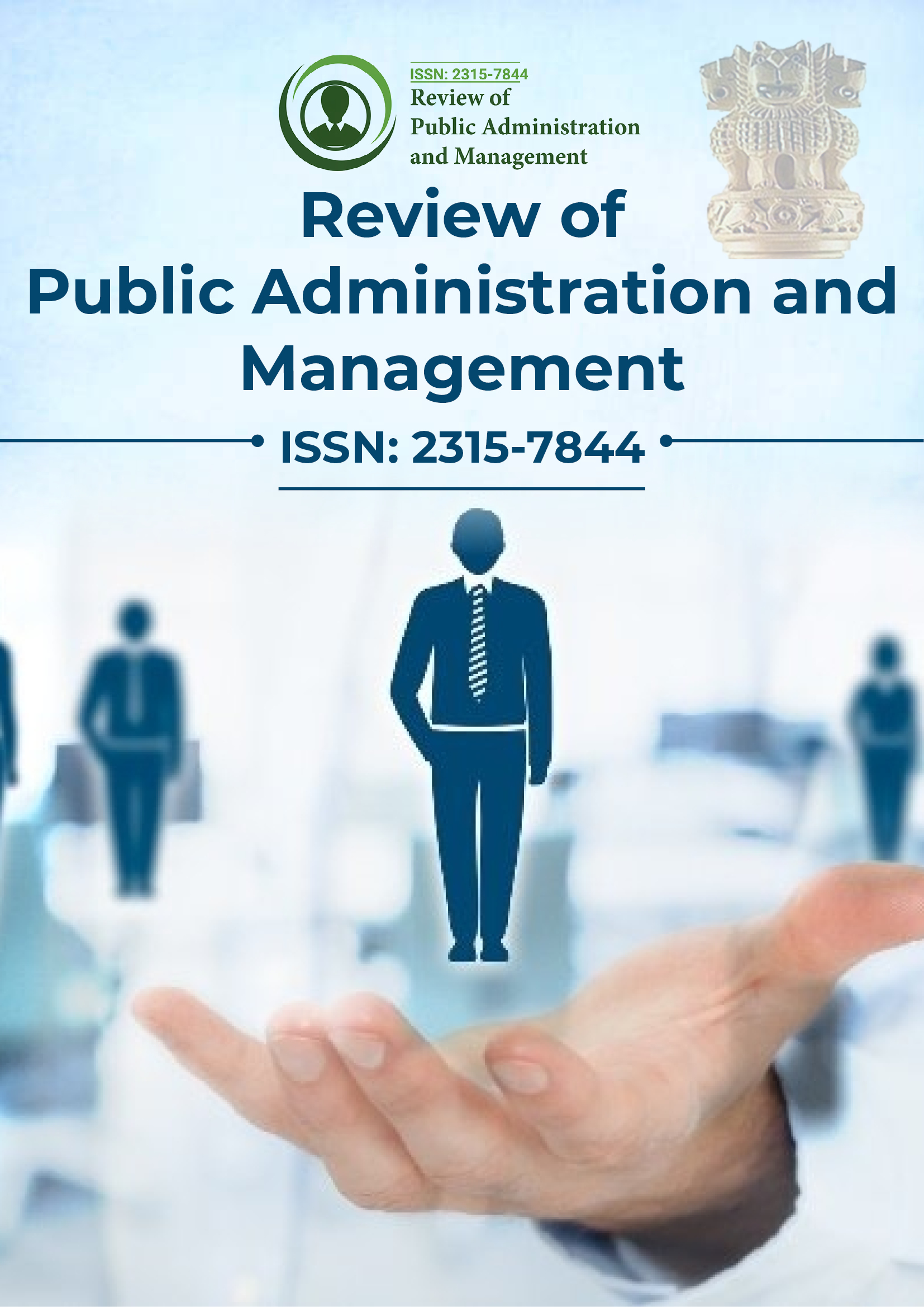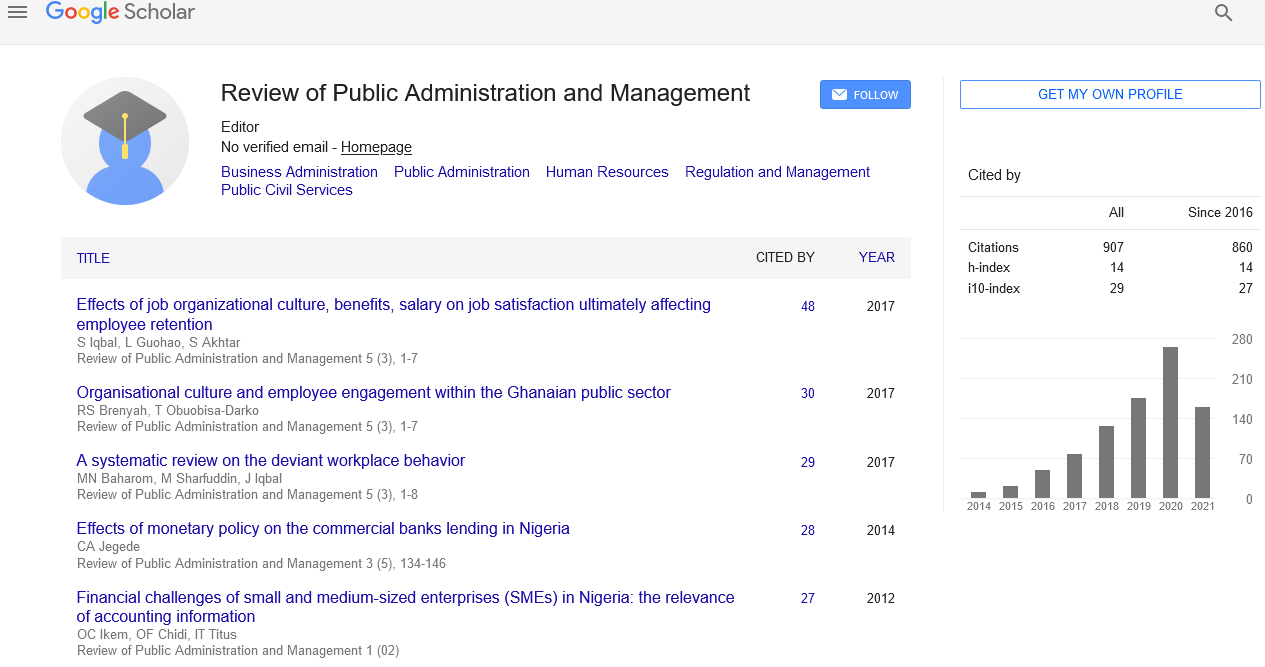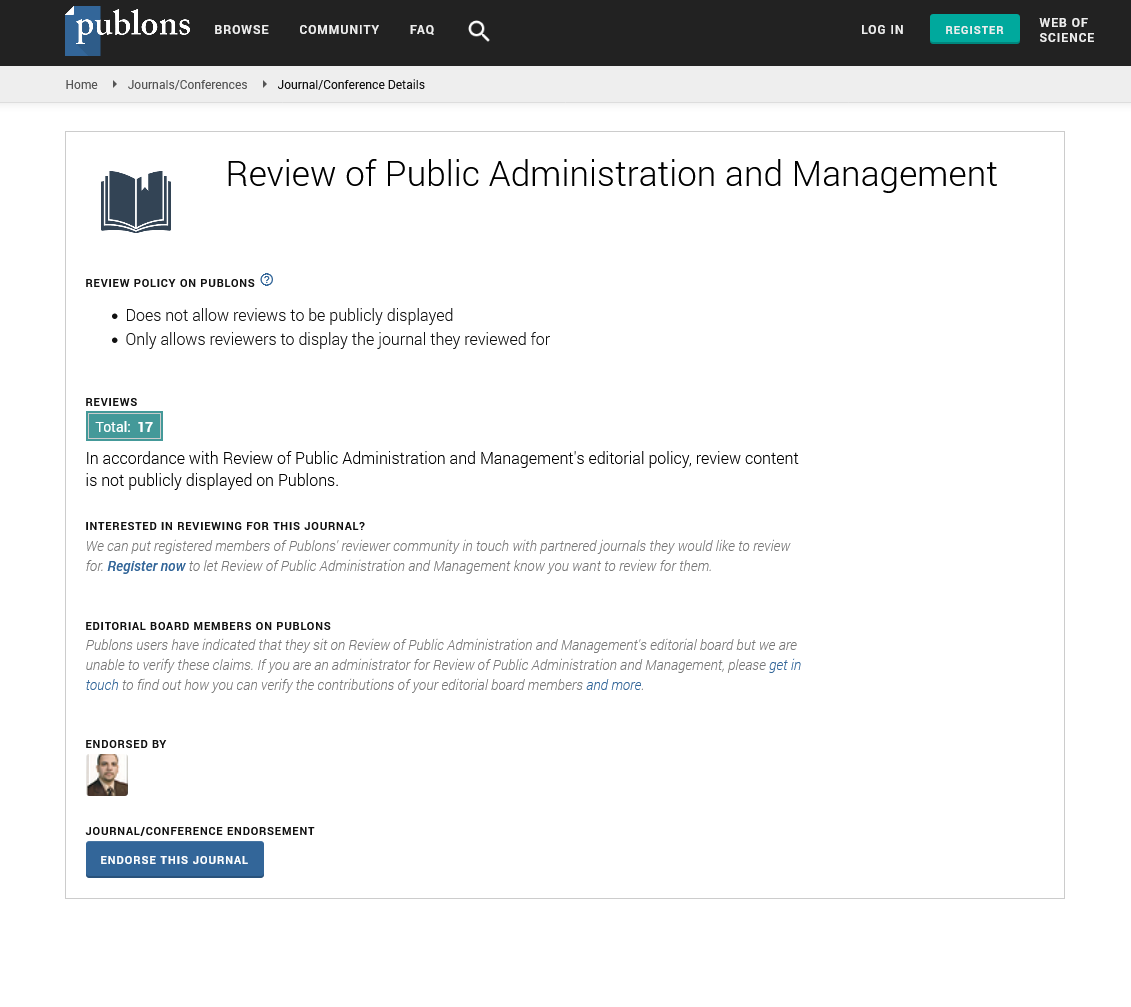Indexed In
- CiteFactor
- RefSeek
- Directory of Research Journal Indexing (DRJI)
- Hamdard University
- EBSCO A-Z
- Scholarsteer
- Publons
- Euro Pub
- Google Scholar
Useful Links
Share This Page
Journal Flyer

Open Access Journals
- Agri and Aquaculture
- Biochemistry
- Bioinformatics & Systems Biology
- Business & Management
- Chemistry
- Clinical Sciences
- Engineering
- Food & Nutrition
- General Science
- Genetics & Molecular Biology
- Immunology & Microbiology
- Medical Sciences
- Neuroscience & Psychology
- Nursing & Health Care
- Pharmaceutical Sciences
Commentary - (2025) Volume 13, Issue 1
Urban Governance for Climate Resilience: Public Administration Strategies
Zhang Meiling*Received: 24-Feb-2025, Manuscript No. RPAM-25-29224; Editor assigned: 26-Feb-2025, Pre QC No. RPAM-25-29224; Reviewed: 12-Mar-2025, QC No. RPAM-25-29224; Revised: 18-Mar-2025, Manuscript No. RPAM-25-29224; Published: 26-Mar-2025, DOI: 10.35248/2315-7844.25.13.481
Description
Urban areas across the globe are increasingly vulnerable to the effects of climate change, including rising temperatures, extreme weather events, flooding, sea-level rise, and resource scarcity. With more than half of the world's population living in cities and that number expected to rise, urban governance has become central to global climate resilience efforts. Building climate-resilient cities is not only a technical or environmental challenge but also a critical administrative and governance issue. Public administration, as the backbone of urban governance, plays a pivotal role in planning, coordinating, and implementing climate strategies that protect people, infrastructure, and ecosystems. This description explores the evolving landscape of urban governance in the context of climate change and highlights the key strategies that public administrators are employing to promote urban climate resilience.
Urban climate resilience refers to the capacity of cities to anticipate, absorb, recover from, and adapt to climate-related shocks and stresses. It encompasses both physical infrastructure and the social systems that support urban life. Public administration systems are increasingly being called upon to design and execute integrated strategies that address climate risks while promoting equity, sustainability, and long-term urban development. This has led to a shift in urban governance models, from reactive crisis management to proactive, forward-looking resilience planning. Public administrators now play a crucial role not only in emergency response and disaster risk reduction but also in embedding climate resilience into everyday decision-making, development policies, and infrastructure investments.
One key strategy in urban climate resilience is mainstreaming climate considerations into local governance frameworks. This involves integrating climate adaptation and mitigation goals into urban planning, building codes, zoning laws, public procurement, and transportation systems. Cities like Rotterdam, Singapore, and Copenhagen have demonstrated how municipal governments can use regulatory tools to require climate-proof construction, enhance green spaces, and reduce carbon footprints. Public administrators are responsible for ensuring that these policies are developed in collaboration with stakeholders, are grounded in scientific data, and are enforced consistently across all sectors.
Another vital aspect is multi-level governance and interagency coordination. Climate resilience requires collaboration between national, regional, and local governments, as well as across various administrative departments such as health, transport, housing, environment, and disaster management. Fragmented governance often leads to inefficiencies, duplication of efforts, and policy conflicts. Effective urban governance for climate resilience demands coordinated action plans, shared data systems, joint funding mechanisms, and unified communication strategies. For instance, metropolitan areas like New York City and London have established interdepartmental climate offices that facilitate integrated planning and monitor resilience targets.
Community engagement and participatory governance are also essential to building urban climate resilience. Public administrators must ensure that citizens are involved in resilience planning, especially marginalized and vulnerable communities who are disproportionately affected by climate impacts. Inclusive governance processes allow local knowledge to inform policy design, foster public trust, and strengthen the legitimacy of climate actions. Participatory tools such as community mapping, public consultations, and neighborhood resilience committees help governments identify local risks and co-create solutions. Furthermore, civil society organizations and urban residents often act as first responders in crisis situations, and their involvement is crucial for effective risk management.
Investments in nature-based solutions and green infrastructure are increasingly being championed by public administrators as cost-effective and multifunctional resilience strategies. Green roofs, urban forests, wetlands restoration, and permeable pavements not only reduce the urban heat island effect and improve stormwater management but also enhance biodiversity and public well-being. Many cities are now incorporating ecosystem-based approaches into their climate action plans, with public sector agencies leading the design, funding, and maintenance of such initiatives. These strategies require cross-sector collaboration, long-term budgeting, and adaptive management approaches that can evolve with changing climate conditions.
In addition, data-driven governance and early warning systems are transforming how cities prepare for and respond to climate hazards. Public administrations are increasingly using Geographic Information Systems (GIS), climate modeling, satellite imagery, and real-time data from sensors to monitor vulnerabilities and improve decision-making. Smart city technologies enable predictive analysis of flood risks, heatwaves, and infrastructure stress points. However, the availability of technology must be matched by institutional capacity to interpret and apply the data effectively. Public administrators must build data literacy, invest in training, and develop partnerships with academic and technical institutions to translate complex information into actionable plans.
Financing climate resilience is another major challenge for urban public administrations, especially in low- and middle-income countries. Building resilient infrastructure, upgrading informal settlements, and maintaining emergency systems require significant investments. Public administrators need to explore innovative financing mechanisms such as green bonds, climate funds, public-private partnerships, and international development assistance. Additionally, mainstreaming climate risk into municipal budgeting and capital investment planning is essential to ensure long-term sustainability.
Institutional capacity building and adaptive governance are critical enablers of successful climate resilience strategies. Urban administrations must be equipped with the skills, tools, and legal mandates to respond to dynamic climate risks. This includes revising outdated laws, creating dedicated climate resilience units, hiring climate specialists, and fostering a culture of innovation and flexibility. Adaptive governance allows public institutions to learn from past experiences, adjust strategies in response to new information, and incorporate feedback from stakeholders. This continuous learning process is essential given the uncertainties and complexities of climate change.
In conclusion, urban governance for climate resilience represents a paradigm shift in public administration. It requires moving beyond siloed planning and short-term responses toward integrated, inclusive, and forward-thinking strategies. Public administrators serve as the critical link between policy, implementation, and community engagement. Their ability to coordinate across sectors, manage resources, and respond to evolving risks will determine the success of climate resilience efforts in cities. As the climate crisis intensifies, the role of public administration in safeguarding urban populations and infrastructure will become increasingly vital. Building resilient cities is not just an environmental necessity; it is a governance imperative.
Citation: Meiling Z (2025). Urban Governance for Climate Resilience: Public Administration Strategies. Review Pub Administration Manag.13: 481.
Copyright: © 2025 Meiling Z. This is an open access article distributed under the terms of the Creative Commons Attribution License, which permits unrestricted use, distribution and reproduction in any medium, provided the original author and source are credited.


